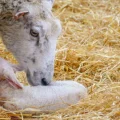Bears and their relationship to dogs and cats have long been a topic of interest and curiosity. While bears may seem quite distinct from domesticated dogs and domestic cats, there are surprising connections between these animals that shed light on their shared evolutionary history.
When examining the biological characteristics of bears, it becomes apparent that they have more similarities to dogs than to cats. One significant aspect is their skeletal structure, which bears a closer resemblance to that of dogs. Additionally, a closer biological analysis has revealed that bears are more closely related to dogs than to cats or any other carnivore.
To understand this connection, it is important to delve into the taxonomy and evolutionary relationships of these animals. Bears belong to the Carnivoran suborder caniformia, which includes various carnivores such as dogs, raccoons, mustelids (weasels, badgers, otters, etc.), skunks, and seals. Among these species, bears share a more recent common ancestor with seals.
The Caniformia order, also known as “dog-like carnivorans,” encompasses both bears and dogs. This classification highlights the biological similarities and shared ancestry between these two animals. Similarly, cats belong to the Feliformia order, known as “cat-like carnivorans,” which includes species like lions, tigers, and domestic cats. This distinction further emphasizes the closer relationship between bears and dogs.
Despite their classification as large apex predators, bears often exhibit a natural fear of dogs. Even the smallest dog breeds, such as Chihuahuas, have been known to frighten away bears simply by barking. Bears seem to recognize that dogs can pose a threat and tend to avoid confrontations with them. It is worth noting that this behavior may not be universally consistent across all bear species and individual bears.
However, it is important to understand that the fear bears have towards dogs does not stem from a deep biological connection but rather from a learned response to the potential threat posed by dogs. Bears, being highly adaptable animals, have likely encountered confrontations with dogs in the past and have learned to avoid them whenever possible.
Interestingly, bears tend to ignore dogs that are fenced-in or tethered-up, as they perceive them as less of a threat. In such cases, the bear recognizes the dog’s restricted movement and inability to engage in aggressive behavior, which diminishes the perceived danger.
While bears may seem quite distinct from dogs and cats, their shared evolutionary history reveals a closer relationship to dogs. This connection can be observed through their skeletal features and biological analysis. However, it is essential to recognize that the fear bears exhibit towards dogs is a learned response rather than a deep biological bond. Understanding these connections enhances our knowledge of the complex and fascinating world of animal evolution and behavior.

Are Bears Closest To Dogs?
Bears are closest to dogs compared to other carnivores. Despite the significant time gap between their common ancestors, bears and dogs share several similarities in their skeletal features, indicating a closer biological relationship. While bears and dogs belong to different families (Ursidae and Canidae, respectively), they both fall under the order Carnivora.
Here are some key points to further explain the relationship between bears and dogs:
1. Evolutionary history: Bears and dogs diverged from a common ancestor around 42 million years ago. Over time, they developed distinct characteristics and adapted to different ecological niches.
2. Genetic analysis: DNA studies have revealed that bears and dogs share a higher degree of genetic similarity compared to other carnivores. This suggests a closer evolutionary relationship between the two species.
3. Skeletal features: Bears and dogs possess similar skeletal structures, including their teeth, jaw structure, and limb bones. These shared characteristics further support their close evolutionary connection.
4. Behavior and diet: Bears and dogs exhibit some behavioral and dietary similarities. Both species are opportunistic feeders and have omnivorous tendencies, although bears are generally more herbivorous than dogs.
5. Taxonomy: Bears and dogs belong to different families within the Carnivora order. Bears are classified in the family Ursidae, while dogs belong to the family Canidae. However, despite this distinction, they are still considered to be more closely related to each other than to other carnivore families.
Although bears and dogs belong to different families, their shared genetic, anatomical, and behavioral characteristics indicate a closer biological relationship compared to other carnivores. This suggests that bears are indeed closest to dogs within the carnivore group.
What Is The Closest Relative To A Bear?
The closest living relative to a bear is the seal. Bears belong to the Carnivoran suborder caniformia, which includes various animals such as dogs, raccoons, mustelids (weasels, badgers, otters, etc.), skunks, and seals. Among these, seals are the most recent common ancestor shared with bears.
To provide a more organized explanation, here are some key points:
1. Bears are a part of the Carnivoran suborder caniformia, which consists of several animal families.
2. The caniformia suborder includes diverse animals like dogs, raccoons, mustelids, skunks, and seals.
3. Among these caniformia animals, seals are the closest living relatives to bears.
4. Seals and bears share a common ancestor more recently than with other caniformia animals.
5. The shared ancestry between seals and bears is believed to have diverged from a common ancestor millions of years ago.
6. Despite the evolutionary divergence, seals and bears still exhibit some anatomical and genetic similarities.
Seals are the closest living relatives of bears within the Carnivoran suborder caniformia.
How Close Are Bears To Cats?
Bears and cats belong to different branches of the Carnivora order, but they do share some similarities. Bears are classified in the family Ursidae, while cats belong to the family Felidae. Despite their differences, bears and cats do share a common ancestor.
Here are some points that highlight the relationship between bears and cats:
1. Taxonomy: Bears and cats are both members of the larger order Carnivora, which includes various carnivorous mammals. However, they diverge at the family level, with bears in Ursidae and cats in Felidae. This means that they are not as closely related as, say, different species within the same family.
2. Evolutionary history: Bears and cats branched off from a common ancestor around 40-50 million years ago. They evolved different characteristics and adapted to different ecological niches. Over time, they developed distinct morphological and behavioral traits.
3. Genetic similarities: Despite their evolutionary divergence, bears and cats still retain some genetic similarities. Through genetic studies, scientists have identified shared genetic traits between the two groups. However, these similarities are not as pronounced as those found within the same family.
4. Anatomical differences: Bears and cats have distinct anatomical features that set them apart. For example, bears have a more omnivorous diet, with adaptations like strong jaws and large molars for crushing vegetation and consuming meat. Cats, on the other hand, have sharp teeth and retractable claws suited for hunting small prey.
Bears and cats are not closely related in terms of taxonomy, but they do share a common ancestor within the Carnivora order. While they have some genetic similarities, their evolutionary paths have led them to develop distinct characteristics and adaptations.
Are Bears Afraid Of Dog Barks?
Bears are generally afraid of dog barks. Despite their size and strength, bears tend to be wary of dogs and can be easily scared away by their barking. This fear is not limited to specific dog breeds; even small dogs like Chihuahuas have been known to successfully intimidate bears with their vocalizations.
Here are a few key points to consider:
1. Bear behavior: Bears are wild animals, and their natural instincts drive them to avoid confrontation whenever possible. They are cautious creatures and prefer to retreat rather than engage in a fight. When dogs bark at bears, it triggers their flight response, causing them to retreat.
2. Dog barks as a deterrent: Bears perceive dog barks as a sign of potential danger. The loud and aggressive nature of barking can startle and confuse bears, making them uncomfortable and more likely to leave the area. Dogs’ barking acts as a deterrent, signaling that there may be a threat nearby.
3. Size doesn’t matter: It’s important to note that bears are not evaluating the size or breed of the dog when determining whether to be scared. Even small dogs can effectively scare off bears with their barking. This is because bears primarily rely on their instincts, rather than logical reasoning, when assessing threats.
4. Fenced-in or tethered dogs: While dogs can be effective in scaring bears away when they are able to roam freely, bears may not be as intimidated by dogs that are confined to a fenced-in area or tethered up. Bears can recognize that the dog is unable to reach them and may disregard their presence, perceiving them as less of a threat.
Bears are generally afraid of dog barks due to their natural instincts and the perception of potential danger. However, it’s important to remember that bear behavior can vary, and not all bears may be equally deterred by dog barks. It is always advisable to exercise caution and take appropriate measures to ensure safety when encountering bears in the wild.
Conclusion
Bears are fascinating creatures that have captured the curiosity and admiration of humans for centuries. They are members of the Carnivoran suborder caniformia and share a close biological relationship with dogs, seals, and other caniforms. While bears and dogs may have some similar skeletal features, it is the seals that are the closest living relatives of bears.
Despite their size and status as apex predators, bears are often scared of dogs. Even the smallest dog breeds have been known to intimidate and scare away bears simply by barking. It is important to note that bears typically ignore fenced-in or tethered-up dogs, as they recognize that the dog is not a threat.
This relationship between bears and dogs highlights the interconnectedness of different species within the animal kingdom. It is a reminder of the evolutionary history and diversity that exists in the natural world. Understanding these connections can help us appreciate and respect the incredible biodiversity that surrounds us.
Bears are not only majestic and powerful creatures, but they also have a unique relationship with dogs and other caniforms. Their place in the animal kingdom serves as a testament to the wonders of evolution and the intricacies of nature.












